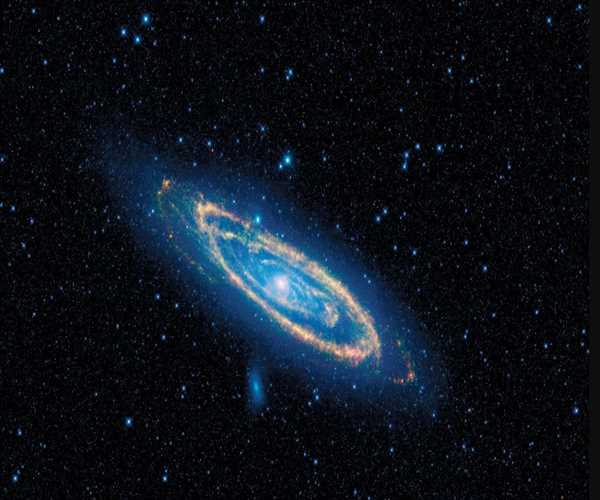Search here

14-Jun-2024 , Updated on 6/14/2024 4:39:54 AM
Is Andromeda the closest galaxy?
The closest galaxy to the Milky Way is the Andromeda Galaxy, also known as Messier 31 or M31. It is the other main component of our local galaxy and located 2.5 million light years from Earth. It is a spiral galaxy, just like the Milky Way, named for the bar-like shape generated by stars within the galaxy's nucleus.
NASA estimates that the dimensions of Andromeda makes it the biggest galaxy in the Local Group at around 260,000 mild-years. But according to NASA, its mass is around similar to or maybe less than that of the Milky Way.
The galaxy may be between five and ten billion years old, in line with scientists. But according to analysis, it might not have existed in its present day shape till two or three billion years ago, when two smaller galaxies that were in orbit of one another mixed to shape the existing-day Andromeda Galaxy.
The best time to see Andromeda with the unaided eye is during a night without the moon, but it is also visible under gloomy skies. According to EarthSky, it is most visible in August and September, but it is visible for at least a portion of the night in many locations throughout the year. There are several routes to reach Andromeda. Finding the constellation Cassiopeia, which resembles a M or W in the sky, is among the simplest. The star Schedar, which points straight toward Andromeda, is the lowest point of the W.
Some of the star clusters inside the galaxy may also be observed under dark skies with a powerful telescope. One such cluster is the brilliant cluster Mayall II, often known as Globular One or G1. Because of this cluster's extreme brightness, some scientists believe it to be the remains of a dwarf galaxy's core that formally joined Andromeda.
It is likely that a massive elliptical galaxy will be formed when the Milky Way and Andromeda join in around 4.5 billion years. It's likely that the solar system will remain mostly unaltered. We might be dragged out of the galaxy's center or completely expelled from it. Since stars are so far away, it is quite improbable that they will collide. But by then, we're very sure our sun's growing brightness will have rendered Earth uninhabitable for any kind of multicellular life, so we won't be around to find out.
Research has found that because Andromeda and the Milky Way are progressively approaching one another, experts believe that they will collide in around 4.5 billion years. As per NASA, it is highly probable that the two galaxies will merge to form a massive oval or elliptical galaxy.
What may occur to our planet and solar system during this merging is unknown. NASA reports that scientists believe humanity might be blown even further from the Milky Way's center or perhaps be expelled entirely from our galaxy. Nevertheless, none of these would have a significant effect on our solar system.

CONTENT WRITER
Writing is my thing. I enjoy crafting blog posts, articles, and marketing materials that connect with readers. I want to entertain and leave a mark with every piece I create. Teaching English complements my writing work. It helps me understand language better and reach diverse audiences. I love empowering others to communicate confidently.
Join Our Newsletter
Subscribe to our newsletter to receive emails about new views posts, releases and updates.
Copyright 2010 - 2025 MindStick Software Pvt. Ltd. All Rights Reserved Privacy Policy | Terms & Conditions | Cookie Policy